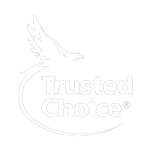Protecting You and Your Family
Watches / warnings:
- Flood watches are issued when rain is heavy enough to cause rivers to overflow.
- Flood warnings describe the severity of the situation and indicate when and where the flood will begin.
- Flash flood watches are issued when heavy rain is occurring or is expected to occur.
- Flash flood warnings are issued when flooding is occurring suddenly. In the event of flash flooding, move immediately to high ground.
- Educate your family and yourself about your community’s flood warnings.
Evacuation:
- Plan an evacuation route.
- Develop a plan for you and your family to communicate if you are separated when a flood comes.
Protecting Your Property
- If you are moving into a new home, apartment or business location, make sure you have adequate insurance coverage. Your bank, local officials or insurance representative can inform you if your location is at risk of flooding.
- Flood insurance is excluded under homeowners and renters policies, but it is covered under the comprehensive section of standard automobile insurance policies and some coverage is available for floods under special commercial insurance policies.
- Flood insurance for homeowners, renters and businesses is administered through the federal government and can be purchased from an insurance agent or company under contract with the Federal Insurance Administration (FIA), part of the Federal Emergency Management Agency (FEMA). Flood insurance is only available where the local government has adopted adequate flood plain management regulations under the National Flood Insurance Program (NFIP). Most communities participate in the program.
- Flood insurance covers direct physical losses from floods and losses resulting from flood-related erosion caused by waves or currents of water exceeding anticipated cyclical levels and accompanied by a severe storm, flash flood, abnormal tide surge or a similar situation which results in flooding. Flood insurance also may cover mudslides.
- Coverage for the structure and contents of the home are sold separately. Buildings are covered for replacement cost but content coverage is available on an actual cash value basis only.
- Maintain a supply of emergency materials: plywood, plastic sheeting, nails, hammer, shovels, sandbags, flashlight, batteries, battery-operated radio, first aid kit, medication, sturdy shoes, emergency food and water, cash and credit cards.
- Install a system to prevent flood water from backing up in sewer drains.
- Locate switches to turn off gas, electricity and water.
- Make an inventory of your possessions and store it off the premises. If your stuff is damaged, this list will help facilitate the claim filing process.
courtesy of iii.org



